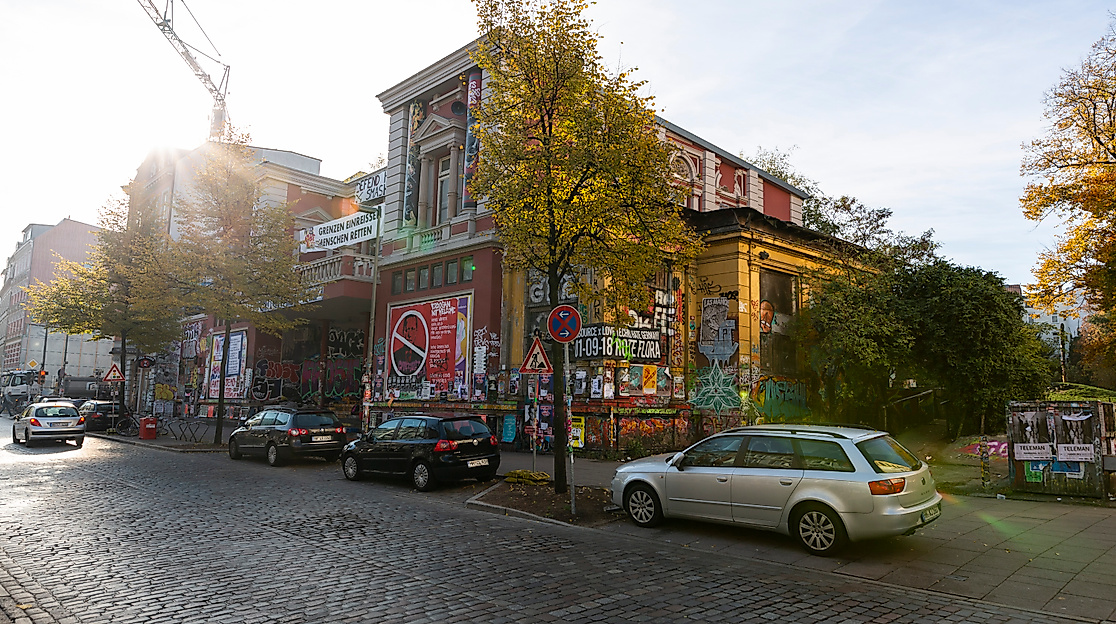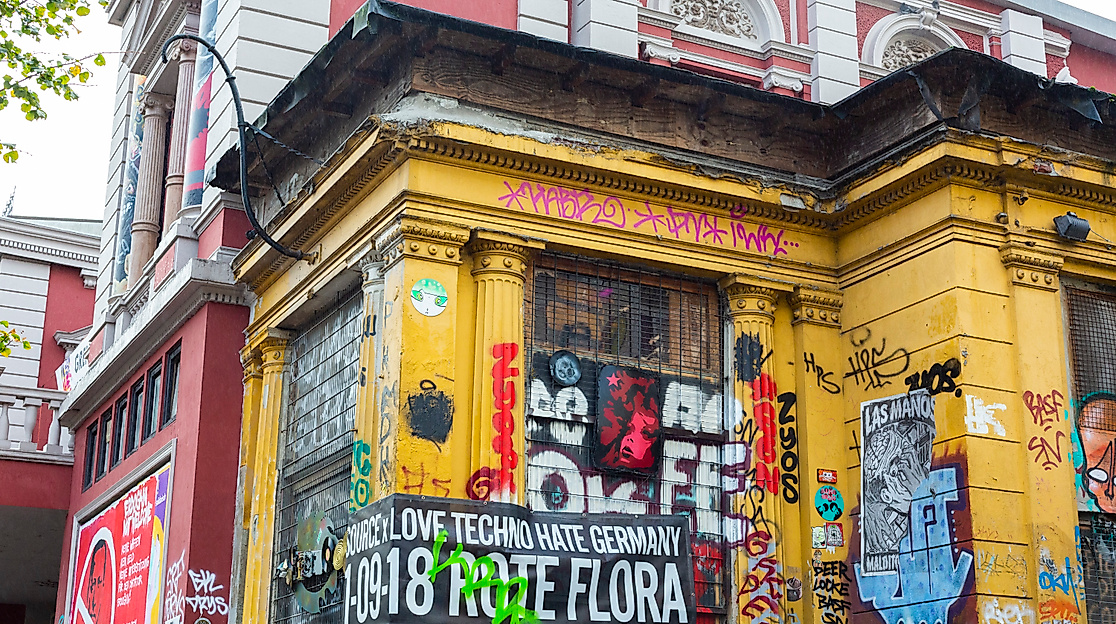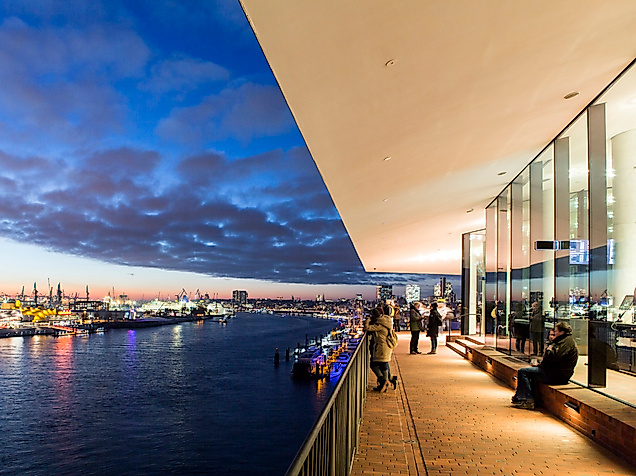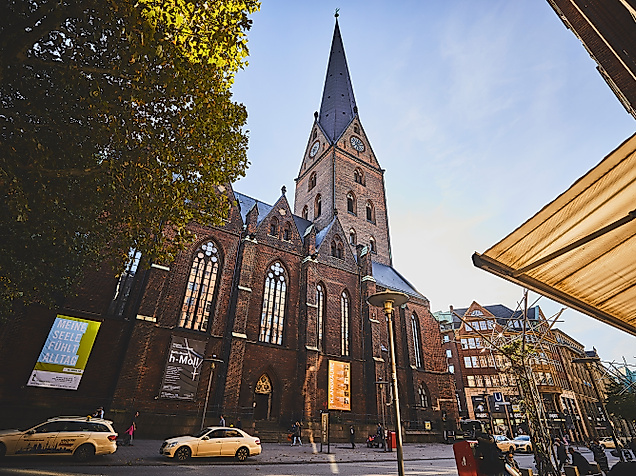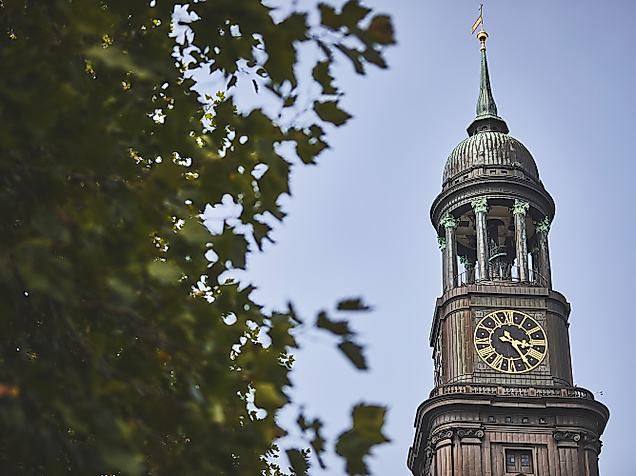Schulterblatt is the hot spot of Schanze with many restaurants and bars. As a self-proclaimed autonomous cultural center, the Rote Flora is a building with a special history.
The redoubt was not far from St. Pauli and in its original purpose once a part of the fortifications of Hamburg (Sternschanze), has after the French occupation time its own small amusement district pronounced and the Schulterblatt was - as one would say today - the hot spot. As it still is today.
Schulterblatt is one of the many streets in Hamburg where the name tells its story. Now there was no surgical clinic here, however, but a proper sailor's pub that had the shoulder blade of a whale as its store sign.
Today there is a wide range of pubs, bars and restaurants on the Schulterblatt that it can be very difficult to make a decision.
In its center is the "Rote Flora". Today a self-proclaimed autonomous cultural center and still a hub of political action, the Flora or rather the Flora Concerthaus with all its predecessors was a place of vaudeville, dance and general amusement until World War 2. After the war, the building was used for a wide variety of purposes. These included a cinema, a warehouse, alternative locations for other cultural institutions and much more. When plans to turn the Flora into a musical theater (Phantom of the Opera) became known at the end of the 1980s, resistance in the neighborhood grew stronger and stronger. In the summer of 1989, the city offered the defiant initiatives the building temporarily for rent in order to present the proposed use as a district cultural center.
As a result, the Flora was occupied in November 1989, given its purpose as the Red Flora under self-administration, and the "New Flora" was unceremoniously built on Holstenstrasse for the Phantom of the Opera.
